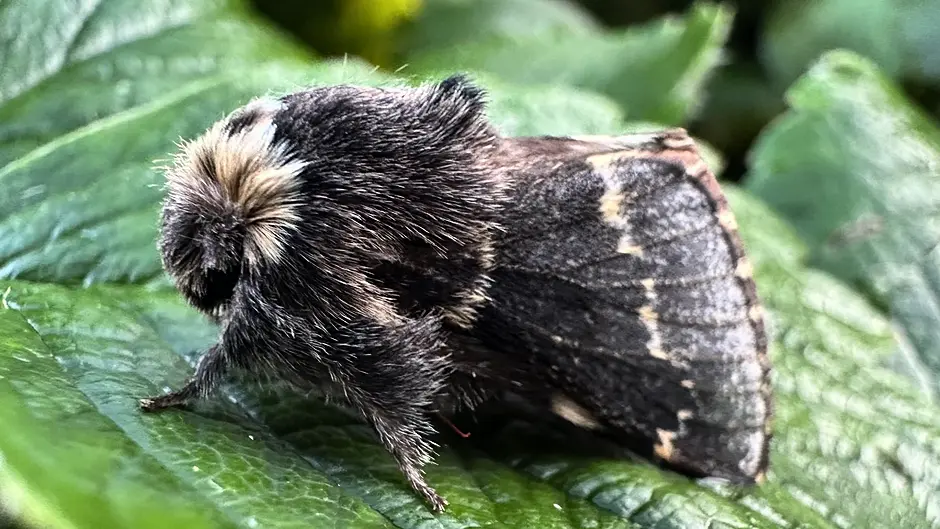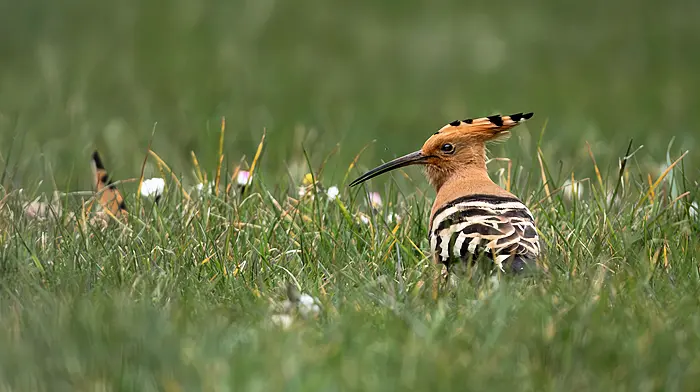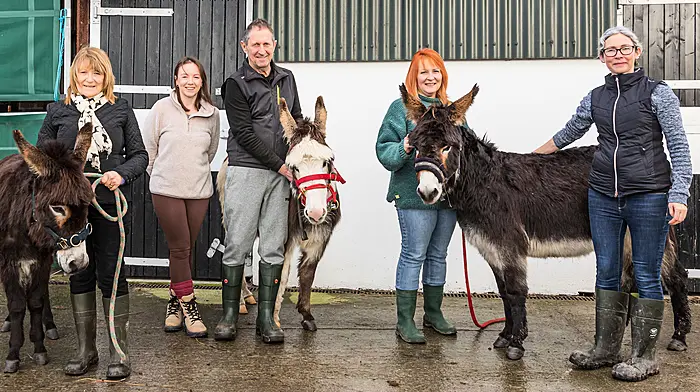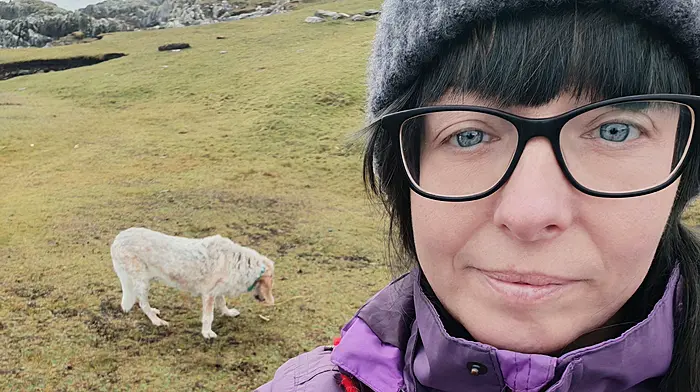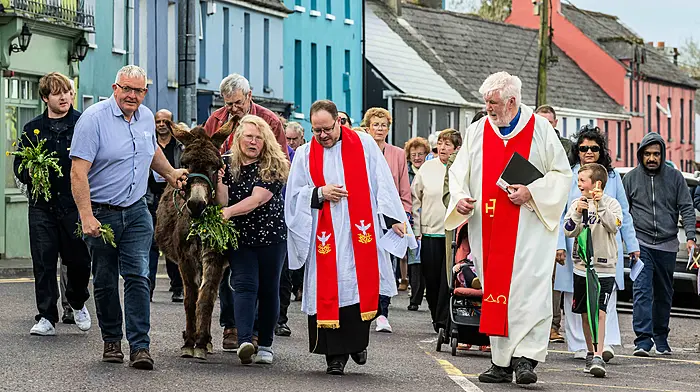BY ANN HAIGH
DURING the Christmas break, we paused our routine to reflect on the wildlife highlights West Cork offered us in 2023.
As a family, we love exploring local nature hotspots, including beaches, estuaries, lakes, rivers, and woodlands. There is always something new or exciting to discover.
Reflecting on the past year helped us to recall the wonder and create anticipation for the new year ahead. Marine marvels West Cork excels when it comes to biodiversity along our coastline.
We are fortunate to have such natural treasure at our doorstep. I recognise that I may sound like a broken record, but I still believe that you could replace an expensive wildlife tourism holiday, such snorkelling in the Red Sea, with a local staycation along the coast.
Admittedly, the weather might be better elsewhere, but a simple rock pooling trip here can transport you to a world brimming with colour and strange creatures.
 A star ascidian.
A star ascidian.
In 2023, we had a fantastic time spotting star ascidian, a type of sea squirt. These creatures arrange themselves in colourful colonies over rocks and seaweed, creating a thin adherent layer. Colonies are made up of co-operating individuals called zooids, arranging in groups of 3-12, they form intricate flower-like patterns.
When sharing photos, people often find it hard to believe these are animals, stating they resemble manmade artwork patterns.
Little and large
This year, we encountered our first violet sea snail (Janthina janthina).
Despite their small size (1-2 centimetres), these marine snails are extraordinary. Violet sea snails are pelagic, spending their entire lives floating on the ocean surface, typically in warmer equatorial oceans. Therefore, discovering one in West Cork was especially exciting.
These snails produce mucus that forms a hardened “bubble raft” when infiltrated by air pockets, enabling them to sail the ocean upside down suspended by the raft — a definite bucket list find.
In May, from Toe Head, we witnessed minke whales and a humpback passing by. As if that weren’t enough, a pod of common dolphins was also visible. It was an unforgettable moment.
Monitoring moths
Another highlight of the year was starting to monitor our local moths. We learnt how to use a specialist moth trap with a light that is designed to attract and contain moths. Moths are then identified and released.
As a family, we documented 101 different species of moth, now recorded in the National Biodiversity Centre database. 101 moth species might seem like a significant number and a major achievement for us, but it is worth noting that other Irish naturalists have recorded nearly 600 different species.
The pinnacle of our moth work this year was bringing the trap to our boys’ primary school, where we showcased some of the moths from their school garden. Witnessing the youngsters’ amazement at the diverse and colourful moths was truly delightful, dispelling the common misconception that all moths are small and grey.
Is it a moth or a bird?
In early May, we had a memorable sighting of a hummingbird hawk-moth feeding on coastal kidney vetch. These migratory day-flying moths arrive here from Southern Europe and resemble tiny hummingbirds hovering around flowers.
Wrapping up our year of moth monitoring nicely, was finding the December moth (Poecilocampa populi). These moths boast exquisite winter fur and are among the few species visible in winter, being on the wing from October to December.
In lieu of feeding, they quickly seek out mates. After mating, eggs will be laid on deciduous trees, and the caterpillars will emerge in spring to feed on the budding leaves.
Butterfly list
We observed a delightful array of butterflies in spring, summer, and autumn. Alongside old faithfuls like the peacock, speckled wood, red admiral, and small tortoiseshell, we also enjoyed less frequent species such as the holly blue and the gatekeeper.
A personal first for me this year was the grayling, spotted in Bluid, Castlehaven. True to their name, they weren’t much of a spectacle, especially in their monochrome state with closed wings – their preferred resting position.
In total, we spotted 13 out of the possible 35 butterfly species in 2023. Perhaps you might consider a challenge for 2024, to see how many of the 35 species you can check off the Irish butterfly list?
Joy in the small things
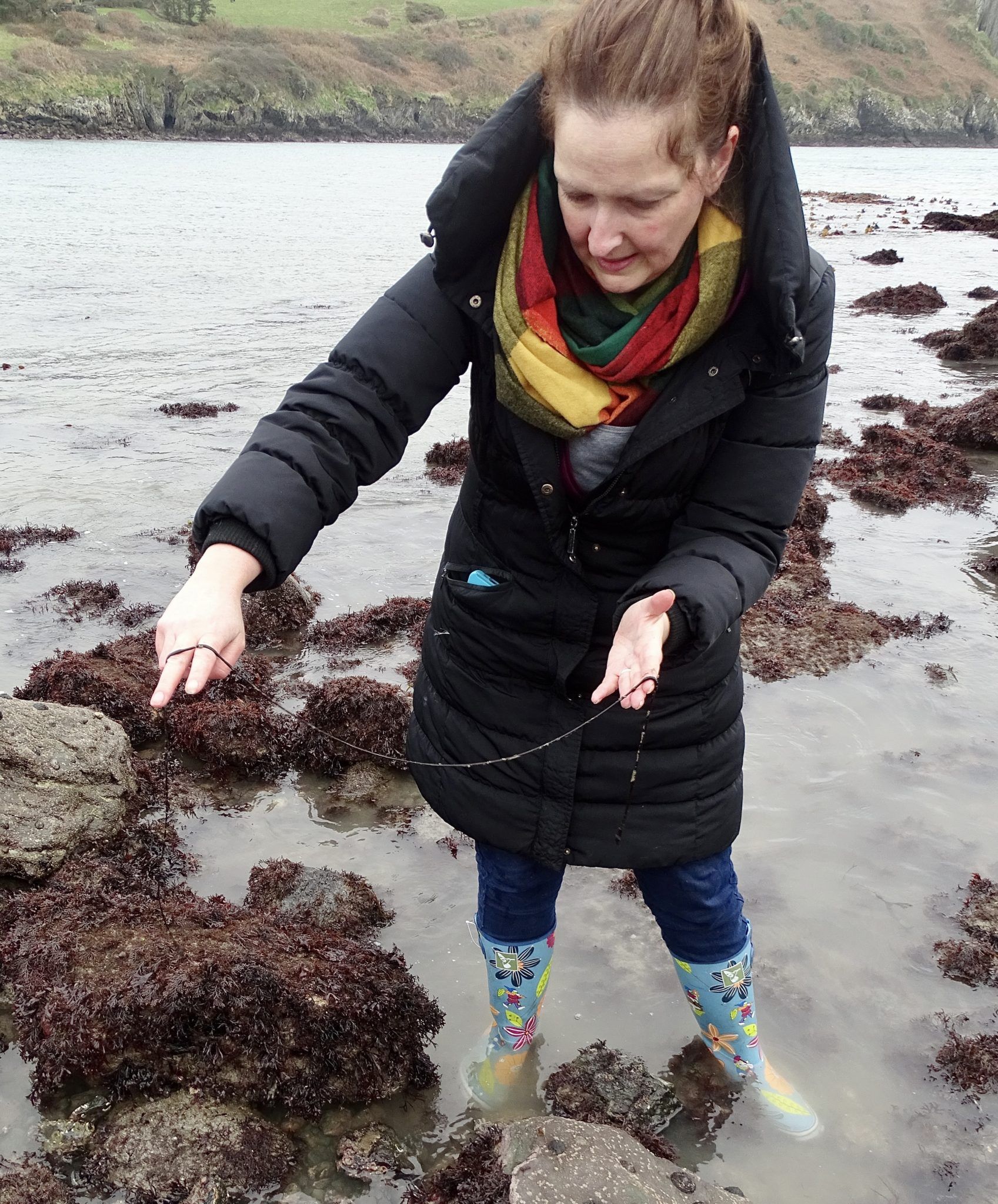 Trying to find where the bootlace worm (lineus longissimus) begins and ends at Tralong in Glandore. It’s the longest animal in the world, allegedly some specimens reach lengths of 55m.
Trying to find where the bootlace worm (lineus longissimus) begins and ends at Tralong in Glandore. It’s the longest animal in the world, allegedly some specimens reach lengths of 55m.
The past year brought sightings of many tiny wonders, including a spider’s egg sac shaped like Sputnik, a water scorpion that snorkels, using its tail as a breathing tube, and common green shieldbug eggs with a smiley emoticon appearance.
One ‘tiny’ creature even presented a paradox. We found the bootlace worm [HF3] (Lineus longissimus) along the shore in Glandore.
Despite its small size when curled up, we were surprised to learn that when stretched out it holds the Guinness World Record as the longest animal, reportedly reaching up to 55 metres.
It was not only enjoyable to see new species but also to learn more about familiar ones. For example, it took until 2023 for us to learn how distinguish between male and female earwigs. Check the pincer-like appendages at the rear, known as forceps: males have inward-curved forceps, while females have straight ones
Memorable birding
 The turtle dove we spotted in May in Lickowen.
The turtle dove we spotted in May in Lickowen.
A standout birding moment for us occurred when we encountered a turtle dove from Sub-Saharan Africa in Lickowen in May.
Turtle doves are uncommon visitors to Ireland, breeding here is rare and they are considered scarce passage migrants. Having previously only heard about turtle doves in the ‘Twelve Days of Christmas’ song, the surprise of spotting one picking through the gravel at the side of a country road was delightful.
In April, we were fortunate to observe a pair of blackwinged stilts that had journeyed from southern Europe to visit Squince. Despite recent records of breeding in Britain, they remain a rare vagrant in Ireland and are not frequently seen here.
The black-winged stilts were a remarkable sight, with an elegant wading gait, long beaks, and strikingly long pink legs.
Having reflected on the year, it is safe to say that we had an enjoyable time spotting wildlife.
Hopefully 2024 will be just as good, if not better.

